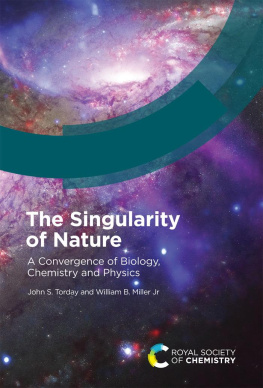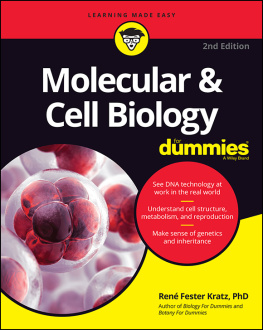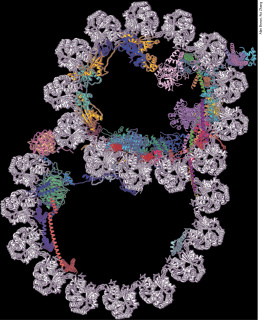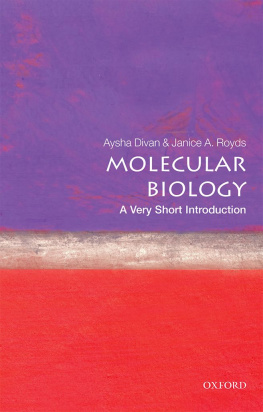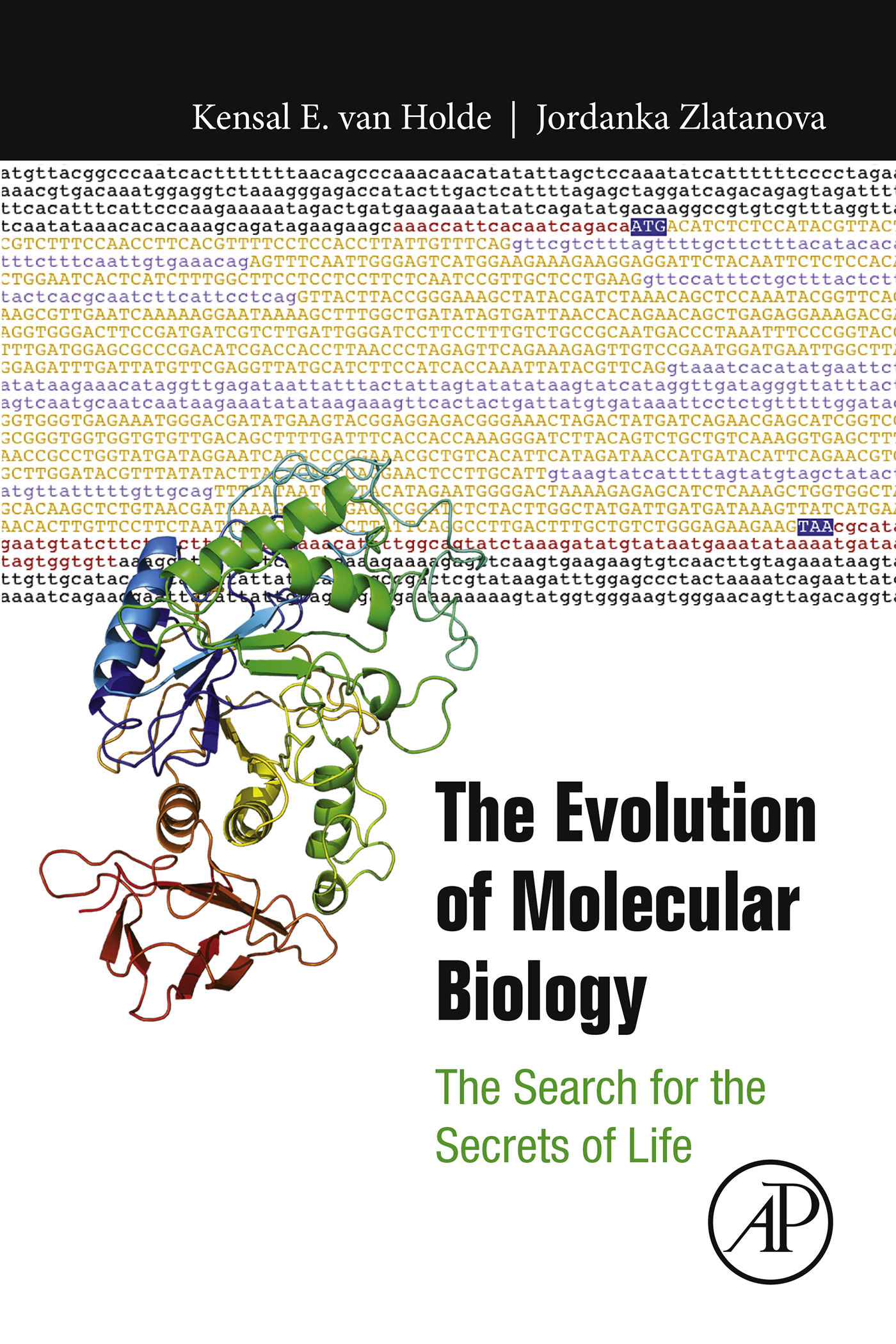The Evolution of Molecular Biology
The Search for the Secrets of Life
First Edition
Kensal E. van Holde
Oregon State University, Department of Biochemistry and Biophysics, Corvallis, OR, USA
Jordanka Zlatanova
University of Wyoming, Department of Molecular Biology, Laramie, WY, USA

Copyright
Academic Press is an imprint of Elsevier
125 London Wall, London EC2Y 5AS, United Kingdom
525 B Street, Suite 1800, San Diego, CA 92101-4495, United States
50 Hampshire Street, 5th Floor, Cambridge, MA 02139, United States
The Boulevard, Langford Lane, Kidlington, Oxford OX5 1GB, United Kingdom
2018 Elsevier Inc. All rights reserved.
No part of this publication may be reproduced or transmitted in any form or by any means, electronic or mechanical, including photocopying, recording, or any information storage and retrieval system, without permission in writing from the publisher. Details on how to seek permission, further information about the Publishers permissions policies and our arrangements with organizations such as the Copyright Clearance Center and the Copyright Licensing Agency, can be found at our website: www.elsevier.com/permissions.
This book and the individual contributions contained in it are protected under copyright by the Publisher (other than as may be noted herein).
Notices
Knowledge and best practice in this field are constantly changing. As new research and experience broaden our understanding, changes in research methods, professional practices, or medical treatment may become necessary.
Practitioners and researchers must always rely on their own experience and knowledge in evaluating and using any information, methods, compounds, or experiments described herein. In using such information or methods they should be mindful of their own safety and the safety of others, including parties for whom they have a professional responsibility.
To the fullest extent of the law, neither the Publisher nor the authors, contributors, or editors, assume any liability for any injury and/or damage to persons or property as a matter of products liability, negligence or otherwise, or from any use or operation of any methods, products, instructions, or ideas contained in the material herein.
Library of Congress Cataloging-in-Publication Data
A catalog record for this book is available from the Library of Congress
British Library Cataloguing-in-Publication Data
A catalogue record for this book is available from the British Library
ISBN: 978-0-12-812917-3
For information on all Academic Press publications visit our website at https://www.elsevier.com/books-and-journals

Publisher: Sara Tenney
Acquisition Editor: Kristi Gomez
Editorial Project Manager: Pat Gonzalez
Production Project Manager: Priya Kumaraguruparan
Cover Designer : Christian Bilbow
Typeset by SPi Global, India
Preface
Within the past century, a whole new science has arisen, a new way of understanding biology and medicine. The applications of this science, which has come to be called molecular biology , pervade every aspect of our lives today and promise even more in the future. Molecular biology has arisen from roots in biochemistry and geneticshas in fact fused these disciplines to provide an understanding of life at a much deeper level than was hitherto possible (). As is often the case with new science, unexpected applications have arisen and created whole new industries.
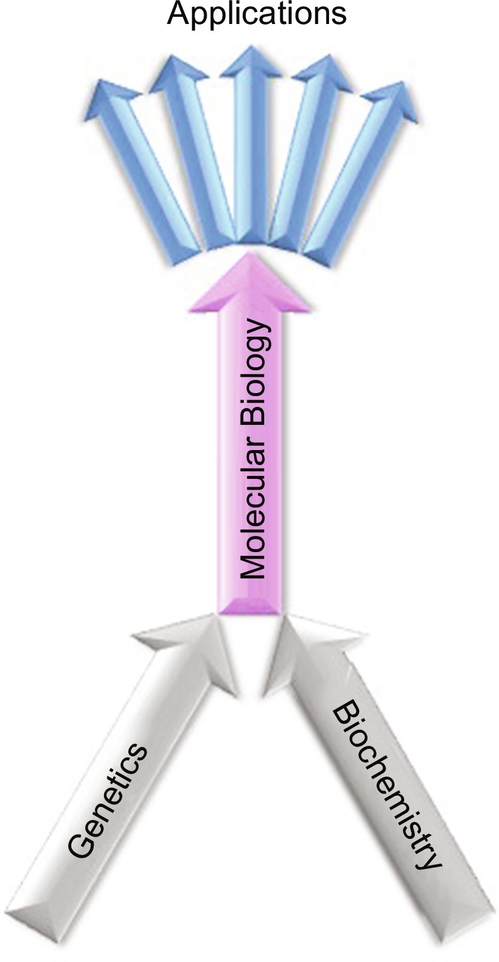
In this book, we will depict the rise and flowering of molecular biology. We will not attempt an exhaustive history of the field, nor of those scientists who built it. Instead, we shall concentrate on the development and flow of ideas. We would like to demonstrate the complexity of science, the sudden breakthroughs following decades of confusion, the frequent blind alleys of misconception that tend to hinder progress. We would like to show how some ideas are slowly crafted by teams of careful and dedicated workers, whereas others arise from individual strokes of genius.
Finally, while this is a book about science, we will try to avoid esoteric knowledge and extensive detail, either about scientific procedures or about the scientists themselves. Nevertheless, there is much about those remarkable men and women who created this field that demands telling, and we shall include biographical material where appropriate.
Chapter 1
Beginnings
Abstract
In this chapter, we have, very briefly, sketched the antecedents of molecular biology, from ancient times until about 1800 AD. Despite the long preexistence of atomistic ideas that might have prompted a mechanistic view of biology, the heavy hands of theology and classical tradition resisted progress, even through the renaissance. In particular, the doctrines of vitalism and spontaneous generation inhibited real advances until the 19th century. Their demise, together with the development of the microscope and rational taxonomy, sets the stage for the flowering of biochemistry and genetics during the early years of the 20th century. These, when finally connected, provide the basis for what we call molecular biology.
Keywords
Atoms; Renaissance; Vitalism; Spontaneous generation; Microscope; Taxonomy
Prologue
To this chapter, there is no prologue. It begins with some of the first attempts to explain the world in natural terms. Before, superstition, in a thousand forms, reigned supreme.
Some Ancient Intuitions
The basic precept of molecular biology can be stated quite succinctly: all the myriad forms and processes in living things can be explained in terms of atomic and molecular structures and their interactions with one another. Although that level of understanding has not yet been accomplished (and possibly never will be in view of the extreme complexity of life), we have never yet encountered impassible barriers to that quest. It has come close to realization only in the past century (). Indeed, the very term molecular biology is new. Therefore, it may seem surprising that the basic idea is more than two millennia old. The Greek philosopher Democritus and his colleagues in the 5th century BC proposed a remarkably simple model for the universe. Everythingtables, chairs, the sun, the moon, grass, even human brains and bodieswas proposed to be composed of elementary indivisible particles called atoms . They could not, of course, imagine atoms as we visualize them today, but they correctly guessed that different objects and substances were created by differing combinations of atoms (which combinations we call molecules ). This is the core of modern chemistry and biochemistry. The extrapolation of this idea into biology is the basis for a molecular biology. This new science is changing our basic understanding of living organisms, whether they are unicellular as bacteria or multicellular as plants and animals. As a consequence of this basic knowledge, the world we live in is changing.


